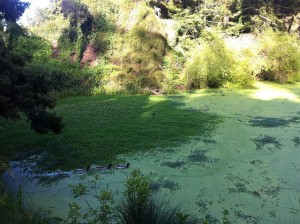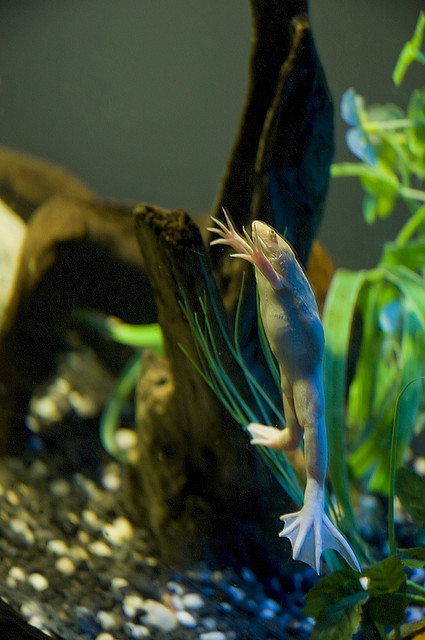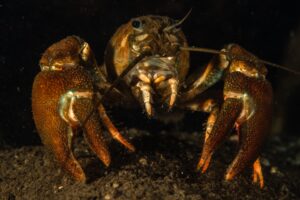An exotic fungal pathogen, responsible for the demise of as many as 500 amphibian species around the world, has been discovered in Golden Gate Park.
The California Fish and Wildlife Department is in the final stages of eradicating the invasive South African clawed frog from the park. A recent study has provided an even greater incentive to exterminate the frogs: they are one of the original carriers of a fungus that exclusively targets amphibians known as Bd (short for Batrachochytrium dendrobatidis).
“This disease is causing the biggest decline [in amphibians] ever recorded by a single pathogen in history,” said SFSU biologist and researcher Vance Vredenburg. “It makes the bubonic plague look like a drop in the bucket.”
The pathogen infects roughly 350 species of amphibians, and possibly many more, and is found on all continents except Antarctica. The United States holds the leading number of known cases, and scientists have been grappling to find ways to control the spread of the disease, called chytridiomycosis, before it decimates amphibian species. Scientists have taken to eradicating carriers like the South African clawed frog, which is immune to the disease, in spots where the frogs turn up — including Golden Gate Park’s Lily Pond.
A dead zone

Lily Pond, a dank pool of water completely covered in duckweed and other aquatic vegetation, is just off JFK Drive and a stone’s throw from the California Academy of Sciences. It used to be a place where turtles sunbathed and ducks waddled around, but the South African clawed frog has turned the pond into a virtual dead zone.
“The clawed frogs will eat anything that moves in front of them,” said Eric Larson, an environmental manager with the state’s fish and wildlife department. “There’s nothing else at the pond now because of them, no fish and no frogs. They’re voracious feeders, highly reproductive, and have no known predators.”
The clawed frog arrived in the United States in the 1940s, and was used as the first well documented form of a pregnancy test. Little then was known about the fungus it secretly carried. When modern technology made the them obsolete, and they were released around into the wild, amphibian populations were not well measured and their immediate impact was unknown.
The first publicized case of the fungus in California was the yellow-legged frog of the Sierra Nevadas in 1978, but scientists now believe that it was the cause of many more mysterious amphibian deaths, such as the California slender salamander.
“I think there were many more species infected with Bd back then,” said Vredenburg. “We just don’t have the studies yet to show it.”
Amphibian deaths
Bd infects the outer skin cells of amphibians that produce keratin. Keratin is responsible for the tough and waxy skin of frogs. When infected, the growth of these keratin-cells explodes at a pace that the frog or salamander cannot shed fast enough. When a thicker outer skin-layer stifles the absorption of electrolytes, the amphibian, which absorbs nutrients directly through their skin, dies slowly from malnutrition.
To make matters worse, the fungus is easily transferrable through contact with a diseased animal. Even swimming in the same river can infect other amphibians. Scientists are hopeful that a new procedure known as bioaugmentation may grant native frogs an immunity to the fungus.
Bioaugmentation works by employing friendly bacteria to defend their host bodies, and has had some success thus far.
“Lots of bacteria have anti-fungal capabilities,” said Vredenburg. “We’ve identified some of these bacteria on native frogs that shield them from Bd.”

Scientists bathe frogs in solutions of the ‘good’ bacteria and then release them into the wild. The hope is that the bacteria, already native to California, would spread and multiply through habitats exactly like the fungus, providing amphibians with a defensive buffer. What’s more, the process itself would be very cheap to do. But Vredenburg didn’t want to overstate the method’s effectiveness.
“It’s working in some places, but not in others. It’s a real mixed bag,” said Vredenburg. With more practice, researchers will continue to investigate this promising method.
Eradicating the clawed frogs
In the short term, Golden Gate Park’s best bet is to simply rid the park of the highly invasive frogs from Lily Pond, an old quarry site. Five years ago there were an estimated 10,000 of the little monstrosities in the pond.
“When we started, we were trapping between 200-500 per week, and towards the end we were getting just 2-5,” said Larson.
But the frogs were proving difficult to completely exterminate with netting alone. All it takes is one fertile female, Vredenburg said, for the population to rebound, so the department has elected to change its tack.
State biologists are adding low doses of chlorine to the pond water to kill off the remaining clawed frogs, which like other amphibians cannot tolerate the chemical. The chlorinated water is toxic to them, but researchers believe the long term ecological harm will be minimal because chlorine breaks down quickly in sunlight. The tarps currently covering Lily Pond are helping to contain the chlorine while it’s doing its magic on the clawed frogs.
If the last the clawed frogs were to die off, they might carry the fungus in Golden Gate Park with them to the grave.
“Now that we’ve identified the fungus in the park, it’s very important that we get rid of these invasive frogs,” said Larson. “Our goal is to eradicate them this summer.”
Jackson Mauze is a Bay Nature editorial intern.





